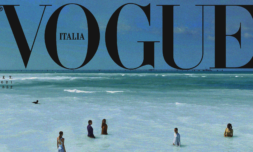Aden denounced modelling last year, but her latest decision to work in modest fashion sheds fresh light on an immutable industry.
Halima Aden, the first hijabi to grace the cover of Sports Illustrated, defiantly quit modelling last November.
In the wake of her career change, she is now turning her sights to the roots of fashion’s diversity issues. Aden plans to design clothes for the Turkish brand Modanisa, one of the biggest names in the modest fashion industry.
She sees it as a firm response to feeling like a ‘minority within a minority’ in a modelling industry that lacked ‘basic human respect’.
Aden’s statements are hardly shocking. Models – from rookies to luminaries – have lamented the fashion industry’s dark underbelly for years.
But for hijabi models, the lack of representation can seem a hurdle too great to surmount. Aden is the only hijabi to have landed a British Vogue cover, while in the US, Somali-American Ugbad Abdi remains the first and last to have featured on its US tributary.
It’s no coincidence that Abdi’s campaign ‘Beauty Without Borders’ features women from ‘around the world’. When hijabis gain traction in this industry, Aden says, their difference becomes ‘a gimmick’.
As demands for diversity grow, Western publications are increasingly signposted for what can be perceived as shallow displays of ‘worldly’ inclusivity.


















